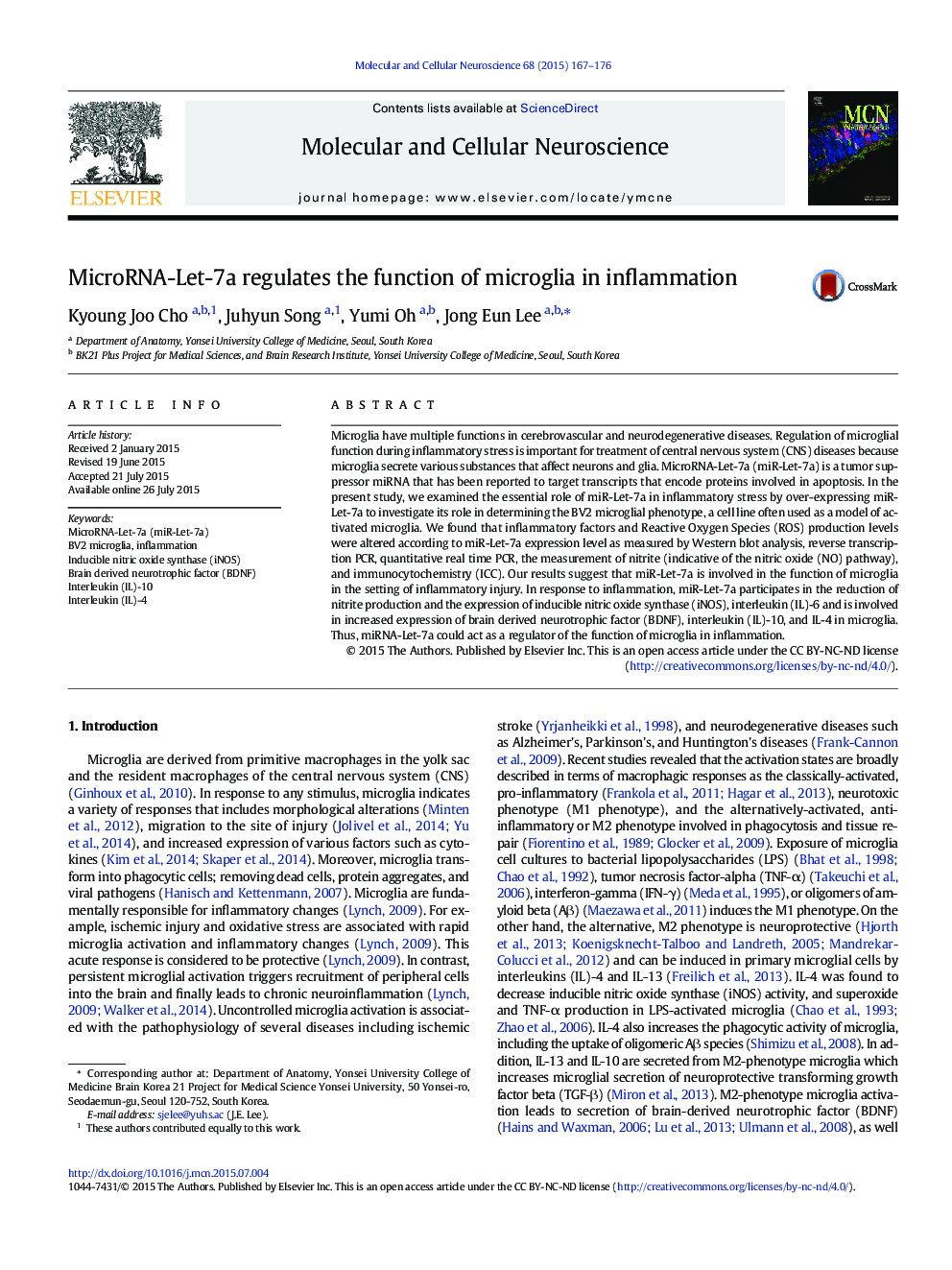| Article ID | Journal | Published Year | Pages | File Type |
|---|---|---|---|---|
| 8478532 | Molecular and Cellular Neuroscience | 2015 | 10 Pages |
Abstract
Microglia have multiple functions in cerebrovascular and neurodegenerative diseases. Regulation of microglial function during inflammatory stress is important for treatment of central nervous system (CNS) diseases because microglia secrete various substances that affect neurons and glia. MicroRNA-Let-7a (miR-Let-7a) is a tumor suppressor miRNA that has been reported to target transcripts that encode proteins involved in apoptosis. In the present study, we examined the essential role of miR-Let-7a in inflammatory stress by over-expressing miR-Let-7a to investigate its role in determining the BV2 microglial phenotype, a cell line often used as a model of activated microglia. We found that inflammatory factors and Reactive Oxygen Species (ROS) production levels were altered according to miR-Let-7a expression level as measured by Western blot analysis, reverse transcription PCR, quantitative real time PCR, the measurement of nitrite (indicative of the nitric oxide (NO) pathway), and immunocytochemistry (ICC). Our results suggest that miR-Let-7a is involved in the function of microglia in the setting of inflammatory injury. In response to inflammation, miR-Let-7a participates in the reduction of nitrite production and the expression of inducible nitric oxide synthase (iNOS), interleukin (IL)-6 and is involved in increased expression of brain derived neurotrophic factor (BDNF), interleukin (IL)-10, and IL-4 in microglia. Thus, miRNA-Let-7a could act as a regulator of the function of microglia in inflammation.
Related Topics
Life Sciences
Biochemistry, Genetics and Molecular Biology
Cell Biology
Authors
Kyoung Joo Cho, Juhyun Song, Yumi Oh, Jong Eun Lee,
